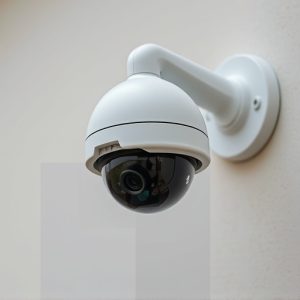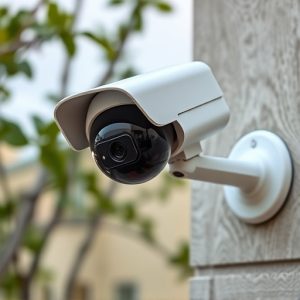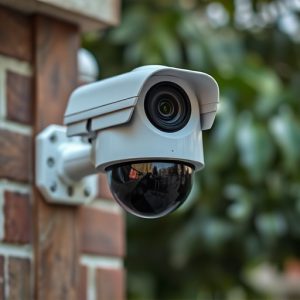Maximizing Security: Best Practices for Dummy Camera Placement
Dummy security cameras placed at or slightly above eye level (5-10 feet/1.5-3 meters) near windows,…….
Dummy security cameras placed at or slightly above eye level (5-10 feet/1.5-3 meters) near windows, entrances, and exits effectively deter theft and vandalism by simulating continuous surveillance. Adhering to Dummy Security Camera Height Guidelines ensures optimal realism, maximizing deterrent effect without breaking the bank. Strategic positioning between 10-15 feet (3-4.5 meters) above ground, considering environment and lighting, enhances security without active monitoring. Using durable, weatherproof materials and correct placement per guidelines is crucial for effective deployment.
“Uncover the power of empty security camera housing units, known as dummy cameras, in enhancing your property’s security. This comprehensive guide explores the significance of understanding and properly placing these realistic mimics. Learn about critical dummy security camera height guidelines to ensure optimal visualization and deter potential threats. Discover best practices for installation, common pitfalls to steer clear of, and how these devices contribute to robust security measures.”
- Understanding Dummy Security Camera Units
- Why Are Height Guidelines Important for Dummy Cameras?
- Best Practices for Placing Dummy Security Camera Housing
- Common Mistakes to Avoid When Using Dummy Cameras
- The Role of Dummy Cameras in Enhanced Security Measures
Understanding Dummy Security Camera Units
Dummy security camera units, also known as fake or decoy cameras, are an effective deterrent for potential thieves and vandals. These devices mimic the appearance of real security cameras while offering a cost-efficient solution for property owners and businesses. Understanding their proper placement is crucial to maximizing their impact.
When it comes to Dummy Security Camera Height Guidelines, positioning them at eye level or slightly above is recommended. This mimics the typical mounting height of actual security cameras, creating the illusion of continuous surveillance. Placement near windows, entrances, and exits is particularly strategic, as these are common areas targeted by criminals. Following these simple guidelines can significantly enhance the protective benefits of dummy camera units.
Why Are Height Guidelines Important for Dummy Cameras?
The placement and orientation of a dummy security camera, including its height, significantly impact the overall effectiveness of the surveillance system. Dummy cameras are designed to deter crime by mimicking real security equipment, but their success depends on realistic presentation. Height guidelines are crucial for achieving this realism.
Adhering to specific dummy camera height recommendations ensures that the device appears natural and authentic, which is essential for maximizing its deterrent effect. Guidelines consider factors like typical camera placement in various environments, field of view, and visual balance, ultimately contributing to a more convincing simulation that can significantly reduce crime rates in both residential and commercial areas.
Best Practices for Placing Dummy Security Camera Housing
When placing dummy security camera housing units, adhering to specific guidelines ensures both aesthetic appeal and effective deterrence. Best practices suggest positioning them at a height that aligns with real camera installations—typically between 5 to 10 feet (1.5 to 3 meters) above ground level. This standard height range makes it hard for criminals to tamper with or ignore the presence of surveillance equipment, even if they know it’s not active.
To maximize the deterrent effect, dummy cameras should be placed in plain sight, avoiding corners or hidden areas. Strategically aligning them with actual camera locations and ensuring their visible from various angles can significantly enhance security. Additionally, using weatherproof and durable materials for the housing units ensures their longevity, reinforcing the illusion of active surveillance.
Common Mistakes to Avoid When Using Dummy Cameras
When deploying dummy security cameras, there are several common mistakes that individuals and businesses often make. One of the primary issues is incorrect placement, especially regarding dummy security camera height. Cameras should be positioned at eye level or slightly elevated to mimic actual surveillance, as lower placements can appear unconvincing. This simple detail significantly impacts the deterrent effect and overall realism.
Another mistake is ignoring local regulations and industry standards. Different regions have specific guidelines for security camera placement, and using dummy cameras without understanding these rules could lead to legal issues or render them ineffective. Always research dummy security camera height guidelines tailored to your location for optimal results.
The Role of Dummy Cameras in Enhanced Security Measures
Dummy security cameras, also known as decoy or mock cameras, play a significant role in enhancing security measures for various locations. These devices are designed to look like real security cameras but serve as a deterrent rather than an active surveillance tool. By strategically placing dummy cameras, businesses and homeowners can create the illusion of heightened security, discouraging potential criminals from targeting their premises.
When it comes to dummy security camera height guidelines, there is no one-size-fits-all approach. The ideal placement varies based on factors like the environment, lighting conditions, and desired level of protection. However, a common practice is to position them at heights that are visible yet slightly elevated, mimicking the typical installation height of real cameras. This often means placing them 10–15 feet (3–4.5 meters) above ground level, ensuring they are prominent but not too easily accessible for tampering or destruction.
Dummy security camera units play a significant role in enhancing security measures by creating the illusion of surveillance. Understanding the importance of height guidelines and best placement practices is crucial for maximizing their effectiveness. By avoiding common mistakes, such as incorrect positioning or ignoring local regulations, you can ensure that dummy cameras serve their intended purpose, deterring potential threats and providing peace of mind. Remember, the key to successful implementation lies in adhering to height guidelines and strategically placing these units for optimal security coverage.


